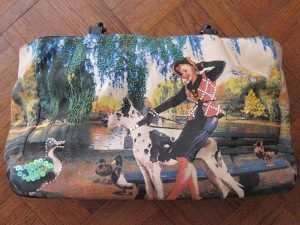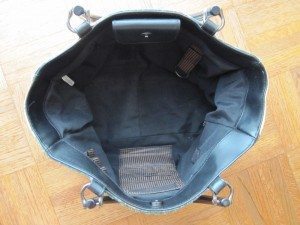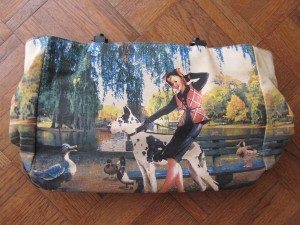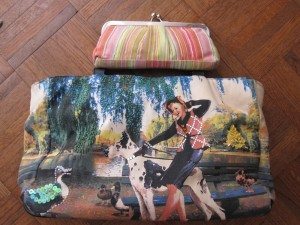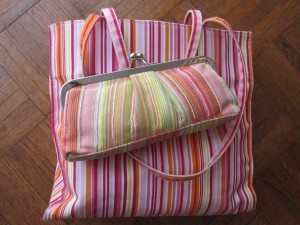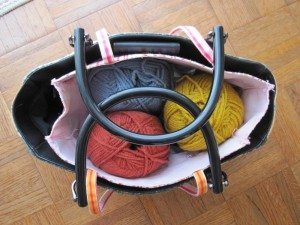 I have begun sewing items for a November sale to benefit the Sew-Op, and it made me think of the selvedge notices I’ve seen recently that say something like “For non-commercial home use only.” Is that restriction legal?
I have begun sewing items for a November sale to benefit the Sew-Op, and it made me think of the selvedge notices I’ve seen recently that say something like “For non-commercial home use only.” Is that restriction legal?
With the big disclaimer that I am not a lawyer, rights laws are complex, and particular cases are always subject to a jury’s interpretation, I thought I’d share what I’ve learned in my research.
First off, most sources agree copyright does not prohibit selling items made with the fabric, although it is certainly illegal to mislead people into believing the item is associated with the brand of the fabric rather than simply made with those materials. The doctrine of first sale is typically invoked to defend this, based on the beginning of Section 109 of US copyright law (page 16 of Chapter 1):
the owner of a particular copy or phonorecord lawfully made under this title, or any person authorized by such owner, is entitled, without the authority of the copyright owner, to sell or otherwise dispose of the possession of that copy or phonorecord.
Copyright prohibits copying the design on the fabric and using it on your own fabric, scrapbook paper, screensavers, etc., or claiming that the design is your own.
In that case it is more appropriate to interpret the selvedge warning as a license agreement, similar to the end user agreements most software makes you OK in the installation process. [See Counterfeit Chic.] This is an agreement you make at the time of sale to honor certain requirements and restrictions set by the seller. The rub here, though, is that the purchaser of the fabric (at the retail level; different agreements may be made for fabric sold wholesale) never makes any verbal or written agreement to abide by the license, nor in fabric stores is there ever a sign over the registers to the effect of “purchase of fabric constitutes agreement to all stated license restrictions.” Law sites Tabberone and legalzoom both conclude there is no legal standing for restrictions on fabric use in items for sale, but both suggest including a disclaimer to avoid the impression that your products are in any way official or endorsed by the fabric designer.
Of course that doesn’t stop a fabric designer – particularly a big company – from attempting to sue for license infringement. I haven’t found a case that was won by the designer, but small time crafters may not have the money (or sufficient incentive) to fight and may simply cave at the first Cease-and-Desist letter.
So I looked in my stash. Granted, not all of my pieces have their selvedges still attached, but in an entire drawer of fabric (none in large quantities, so there were a lot of pieces) I found only two with “non-commercial use only” messages. This is likely partially due to my general lack of interest in licensed characters on my fabric, and my cheapness which leads me to avoid fabric designed by big names. Abiding by the request would not restrict my resources much.
I do wish some legal expert would write a book on copyright law for craft, with a focus on craft that uses materials farther down the production stream (no one copyrights lumber) and craft where patterns are being sold in addition to finished items. The Craft Artist’s Legal Guide barely scratches the surface of copyright and did not have anything to say about the topic of this post or about copyright protection for patterns. [For what it’s worth, the most reliable sources I’ve read say that, just as purchasing a copy of a play does not give you the right to perform it publicly, purchase of a pattern does not give you the right to sell items made from that pattern.] I would snap that book up. There are so many people on the internet who are all sure they are correct but who cannot all be correct because they contradict each other, and this is still true even if you restrict to people who identify themselves as attorneys!
Stay tuned for Monday’s post. I am very excited about it – it would have been today’s post but there were some technical problems that caused delay.


